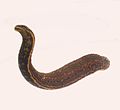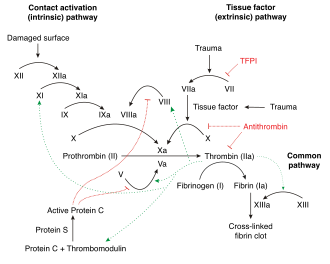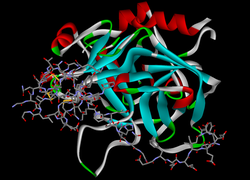History

Anticoagulation therapy has a long history. In 1884 John Berry Haycraft described a substance found in the saliva of leeches, Hirudo medicinalis , that had anticoagulant effects. He named the substance ‘Hirudine’ from the Latin name. The use of medicinal leeches can be dated back all the way to ancient Egypt. [2] In the early 20th century Jay McLean, L. Emmet Holt Jr. and William Henry Howell discovered the anticoagulant heparin, which they isolated from the liver (hepar). [3] Heparin remains one of the most effective anticoagulants and is still used today, although it has its disadvantages, such as requiring intravenous administration and having a variable dose-response curve due to substantial protein binding. [4] In the 1980s low molecular-weight heparin (LMWH) were developed. They are derived from heparin by enzymatic or chemical depolymerization and have better pharmacokinetic properties than heparin. [5] In 1955 the first clinical use of warfarin, a vitamin K antagonist, was reported. Warfarin was originally used as a rat poison in 1948 and thought to be unsafe for humans, but a suicide attempt suggested that it was relatively safe for humans. Vitamin K antagonists are the most commonly used oral anticoagulants today and warfarin was the 11th most prescribed drug in the United States in 1999 [3] and is actually the most widely prescribed oral anticoagulant worldwide. [6] Warfarin has its disadvantages though, just like heparin, such as a narrow therapeutic index and multiple food and drug interactions and it requires routine anticoagulation monitoring and dose adjustment. [4] [7] Since both heparin and warfarin have their downsides the search for alternative anticoagulants has been ongoing and DTIs are proving to be worthy competitors. The first DTI was actually hirudin, which became more easily available with genetic engineering. It is now available in a recombinant form as lepirudin (Refludan) and desirudin (Revasc, Iprivask). Development of other DTIs followed with the hirudin analog, bivalirudin, and then the small molecular DTIs. [4] However, such DTIs were also having side effects such as bleeding complications and liver toxicity, and their long-term effects were in doubt.[ citation needed ]









